I am not an expert on safaris, but if I tell you about our first safari experience and what it was really like, you might then be encouraged to book your first safari.
If anyone had asked me what a safari was like, I would have imagined travelling in a jeep over bumpy roads, a tent put up each night with a lumpy bed to sleep in, and a Portaloo, which you can only go to at night if you are brave enough to venture outside your tent. I would need an armed guard, preferably Dwayne Johnson or Arnold Schwarzenegger.
This was not my idea of a holiday but an endurance test. I don’t like spiders, hot tents or smelly Portaloos. I will stick to lovely hotels with large pools. Why would you hunt around for animals you can see in a zoo anyway?
Then, on a cruise around the Galapagos Islands, we chatted with a couple who loved safaris. Their enthusiasm rubbed off on us, so we looked into it and booked our first safari.
Where to go
When you think of safaris, Africa is the first continent to come to mind. I had heard of Kruger National Park, so I started looking there. It is in South Africa, which I had never been to before.
Plenty of other African countries offer safaris, such as Kenya, Botswana, Tanzania, Zimbabwe, Namibia, and Rwanda. Consider choosing a place where your favorite animal can be found.in significant numbers. Safaris are trips to observe animals so that they can be done anywhere in the world. Searching for tigers in India would be classed as a safari.
Over the last decade, the word “safari” has been overused to include any trip by vehicle. Check that your safari is what you expect and that your guide is an animal expert.
South Africa, Kruger National Park
Kruger National Park is one of the largest parks in Africa, covering 7,576 sq mi (19,623 km2), about the size of Wales or New Jersey. Tourists have been visiting since 1927, so it has a good tourist infrastructure.
The fences have been taken down between the political borders, which allows free movement of the animals and safeguards the migration patterns
Animals in Kruger National Park
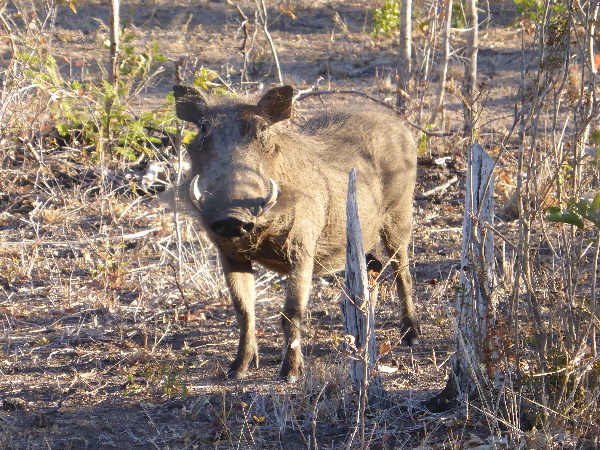
As a complete novice, I had no idea how to respond when someone asked me which of the Big 5 I wanted to see first. What are the Big 5? I discovered it refers to lion, elephant, buffalo, leopard, and rhinoceros. It doesn’t include my favourite animal, the giraffe, but that doesn’t matter; plenty are around.
Kruger National Park has 147 different mammals, 114 reptiles, and 507 species of birds, so there is plenty to see, including the Big 5.
When to go
The best time to visit the Kruger National Park is May to October. This is the dry period, meaning the animals head to the regular water sources, and the guides know where they will likely be. It is also when the bush is a bit thinner, so it is easier to spot the animals.
The temperature can be cold at night but rises to 75F (24C) in July, which is acceptable for an English person. I won’t swim in unheated pools, but it won’t be too hot.
I decided to go in July as that was our wedding anniversary.
Which accommodation?
As Kruger National Park has been open for tourists for a long time, plenty of different types of accommodation have been established.
Self-Catering Rest Camps are at the cheaper end of the market; they are more like campsites where you self-cater. You can hire a bungalow and then book a guide. You can drive yourself through some parts of the park if you want to. However, I wouldn’t recommend it unless you have a lot of safari experience. Even with a guide, it was a bit scary at times.
The other end of the market is private safari lodges which include meals and game drives. You can get accommodation in luxury tents, a tree house, or a solid building with your own pool and animals that come to you to use a watering hole or river. Of course, spas are available. The top end of the market has top-end prices.
I wanted a solid wall between me and the animals while I slept. I couldn’t afford my own private pool or personal butler, but I managed to find a place that sounded perfect. Good home comforts without being too stuffy.
We chose Notten’s Bush Camp which is on a private reserve. Despite the name “Camp”, there wasn’t a tent on site. It isn’t in the Kruger National Park but in Sabi Sands, a private reserve adjacent to it. This means fewer people view the animals but see the same animals.
They had no vacancies for our wedding anniversary, so we went a week early. Safari lodges must be booked about a year in advance if you choose to visit in the peak period.
How long for your first safari?
Safaris typically last 3-4 days, depending on how you travel and how you view the animals.
If you are touring around, maybe spotting the animals as you are touring, then a couple of weeks is typical.
However, if you are going to a lodge and going out in the mornings and evenings to search for animals, then 3-4 days are adequate.
Generally, you arrive on day 1 and make one trip in the evening. On days 2 and 3, you make two trips each day. So, by day 4, you have already done five trips out searching for animals. A good guide doesn’t usually need more than 3 to 5 drives to help you see the Big 5. Of course, going on a safari is more than just a tick list. As this was our first safari, I didn’t want it to be too long if we didn’t enjoy it.
Our plan
I planned to see some of South Africa, go on a safari, and visit Zimbabwe, Zambia, Botswana, and Swaziland (now called Eswatini).
What to wear
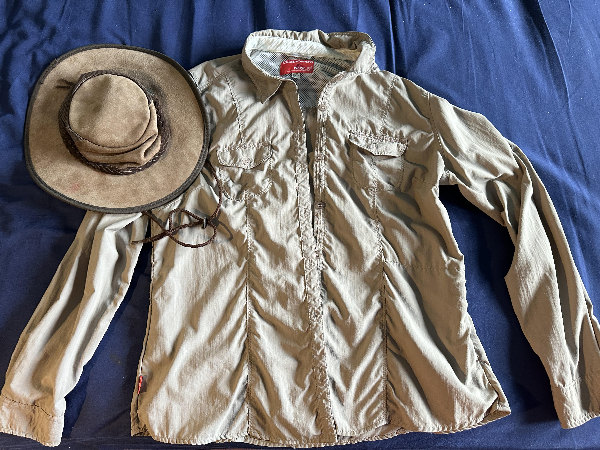
In photos of safaris, people always seem to wear khaki clothes, but I didn’t want to dress like a safari guide.
You don’t have to wear the standard khaki trousers and shirt, but you do need to wear clothes suitable for a safari.
Choose clothes that are natural, neutral tones, and light colours. You want to blend in and not frighten the wildlife away. White shirts can look good in photos but get dirty quickly and cause a glare, which animals will notice. Dark black and blue clothes can attract biting insects, especially if stripped. Don’t wear camouflage clothes; the army usually wears them, and you will send the wrong message.
Long trousers are best if you plan to walk in the bush. If you are considering shorts, remember that it can be very cold in the mornings and evenings, even when the temperature is high during the day.
Shirts with long sleeves can protect you from the mosquitoes and sun. You can also use them as a layer to keep you warm.
You need a hat to protect you from the sun. Take one that won’t blow off when you are in the back of a jeep, and it is racing to see a reported special animal sighting. Again, keep the colours neutral.
Bring a jacket or fleece to keep you warm in the mornings and evenings. You might also need to bring a rain jacket depending on the time of year.
A lightweight scarf can be useful for wrapping around your neck if the sun is burning or around your face when it is partially dusty.
You don’t need any special shoes. Comfortable closed shoes, such as trainers or sneakers, will do. You don’t want any high heels, just shoes you would use to walk across a field at home.
Taking layers is a good idea. It can warm up quickly in the morning and get cold as soon as it gets dark in the evening.
You won’t necessarily be out chasing animals all the time, so bring some clothes suitable for the place you book. After travelling around in the dust, it is nice to bathe and put on slightly smarter clothes for the evening meal.
What I took to wear
Mosquitoes constantly bite me, so I bought a shirt with mosquito protection. Of course, the only shirt in my size was khaki, the colour I didn’t want to wear. I made sure not to wear khaki trousers. I took a fleece and a hat I brought in Australia with a drawstring to hold it on.
What to bring
Sun and insect protection is needed.
If you prefer taking photographs with a camera, take a backup camera. If you have an old camera, that would do. Sometimes, people break their camera within the first few days and are disappointed with the missed opportunity to take the perfect animal shot.
Battery pack (and cable if needed). If you are taking photos with your phone, you will want to keep it charged.
Take a torch. The torch on my phone is reasonable, but you will probably want a good one for moving around the camp at night or getting to your vehicle.
Take a day backpack. As it gets warmer in the mornings, you can take clothes off and put them in your backpack.
Hand gel or wet wipes are helpful if they offer food while on a safari.
Binoculars do not need to be brought, as hopefully, an animal will be close enough to be seen without them; however, if bird watching is of interest, they will be needed.
Sunglasses
Don’t take too much. You often have to fly to your bush camp on a small plane with a weight limit on your baggage.
Our holiday and the close hippo encounter
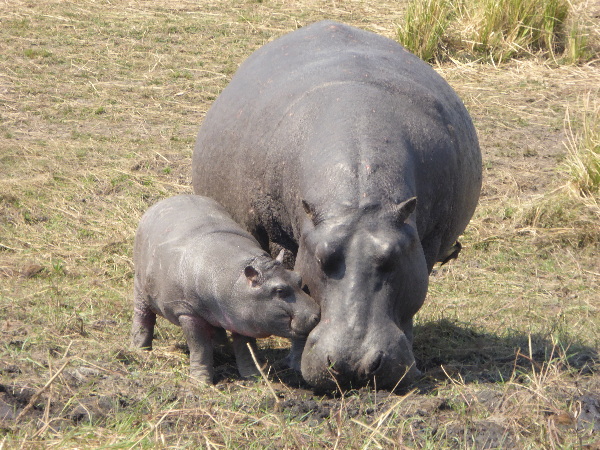
We travelled to Kruger National Park in a small plane with 37 seats. Our guide met us as we landed and took us to a high platform where everyone’s suitcases stood. We pointed out our suitcases, and they were put in a vehicle. We soon bounced along the road, ensuring our hats were secured.
At the camp, the main building had a bar and a lounge with an old log fire. Upstairs was a balcony looking over a plain.
There were eight guest buildings scattered around the main building.
Our bedroom was lovely. One wall was all glass and looked across our balcony to a large plain. We could see a mound of soil, and later, we realised this was by a small waterhole that attracted animals.
The bathroom was large, with a big bath in front of a large window. You could lay in the tub and watch the wildlife outside. There was also an outdoor shower.
They showed us how to use the radio to call for help, and pointed out the air horn we could use in an emergency.
We sat on our balcony with drinks in hand, watching the warthogs and animals that looked like small deer. We then realised we were being watched. Above our balcony was a wooden frame to keep the sun off us. We could see two big eyes staring down. It was a monkey checking us out.
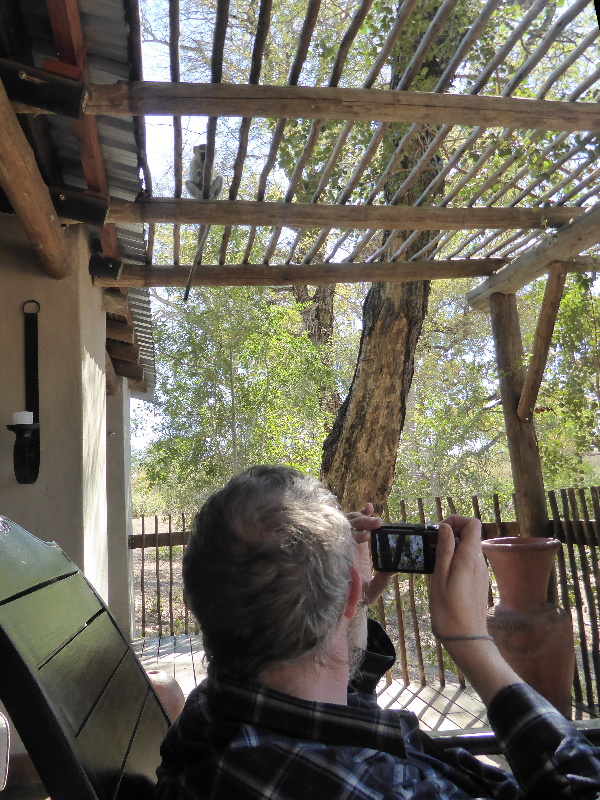
The camp had limited electricity, but we had plugs to recharge our phones or use their hairdryers. Instead of lights, they used candles or gasoline lighting, which gave a soft glow.
At 3:30 after a filling lunch, we went on our first game drive. We had warm hats and gloves just in case it got very cold. We sat in a large roofless Land Rover up high. There were only six guests in each vehicle, so everyone could see easily. We had a driver who did most of the talking and explaining and a man who sat on a special seat in front of the vehicle whose job was to spot the animals. As it got dark, he shone a massive spotlight on the animals.
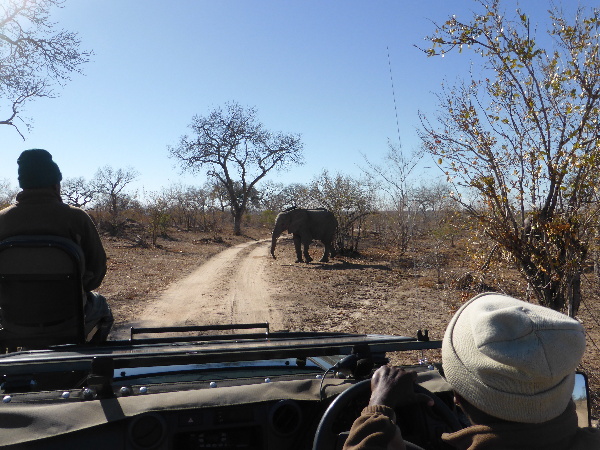
We saw the smallest antelope in the world (royal antelope), dwarf mongoose, zebra, whitetail mongoose, rhino, two lionesses with two cubs, and later two male lions and two females eating buffalo. The lion cubs looked very sweet, and I would have loved to have rubbed their tummies, but if I had taken one step out of the jeep, their mum would have me for dinner. We turned a corner and saw a huge elephant standing by the path. It plodded into the undergrowth, and we continued.
We felt perfectly safe. Our guide did not carry a gun. They explained that in some of the other camps, they carried guns, but that was to make their guests feel safe. In a jeep, you should never be in a position where you have to shoot an animal.
Only two or three vehicles are allowed to watch an animal simultaneously. Each vehicle reports any good spotting. One time, we waited by the roadside until it was our turn to have a look.
When we returned to the camp, someone had run a bath for us and put rose petals on the floor and in our bath. What a lovely surprise!
You can’t leave your room without a guide when it is dark. You can call for one anytime. When dinner is ready, someone comes and takes you.
We sat and chatted around the bar. Then, we had a pleasant dinner, followed by more drinks and a chance to get to know everyone.
We told a staff member we wanted to return to our room, so he got a big torch and escorted us.
We saw a hefty hippo when we looked towards the Land Rovers. It often comes and goes into the pool. We got closer to see the hippo better, and then the staff member said, “Hold the torch on it, and I will go and fetch the others”. So, we were left alone with a hippo in the dark! I could hear the noises of other animals around us and remembered we weren’t meant to be outside alone in the dark. A noisy London street felt a lot safer. What were we meant to do if the hippo moved? Run or shine the torch in its eyes. It seemed ages before all the guests and staff returned.
Day two
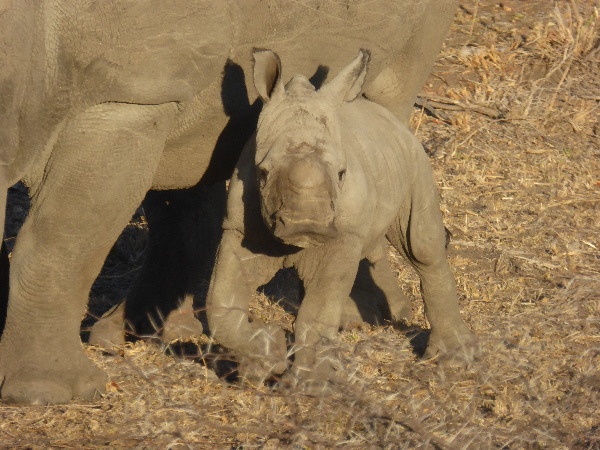
We were given coffee and biscuits before we set off on a game drive at 6:30. We were given a blanket and a hot water bottle each.
Sometimes, we went very slowly to look for animals hiding in the bush, and other times, we rushed to where animals had been spotted.
Our list of spotted animals grew to include impala, rhino, hyena, buffalo, and nyala.
At 9:30, we returned to have a large breakfast. When I had a shower, I noticed red lines on the tops of my legs. Had I contracted some dreadful diseases? It was bound to be fatal. I knew a safari would be dangerous. When the panic subsided, I realised it was probably caused by the hot water bottle on my lap earlier in the morning.
In the afternoon, we decided to go on a guided walk. Four other people joined us. This time, the guide took a gun. We started walking, and after a few minutes, the radio crackled. Our guide told us there was a herd of elephants nearby, and it wasn’t safe to continue in our current direction on foot. So we changed direction, and I kept one eye out for any elephants hiding behind the bushes.
Walking seemed scarier; you no longer had a vehicle to protect you. Our guide pointed out animal tracks and told us many animal facts, such as explaining elephant graveyards. I can now tell the difference between elephant and rhino dun, but I am not sure there is a lot of demand for that skill in West Sussex.
When we were getting hot and tired, a man turned up in a jeep with a cool box full of drinks. As we walked back, we found cushions from the campsite that the hyenas had stolen and chewed.
The evening ride was frustrating. We did spot a few new animals, but most of the time, we dashed to a place only to find we couldn’t get close because it had the maximum number of vehicles. Then, the animals would disappear.
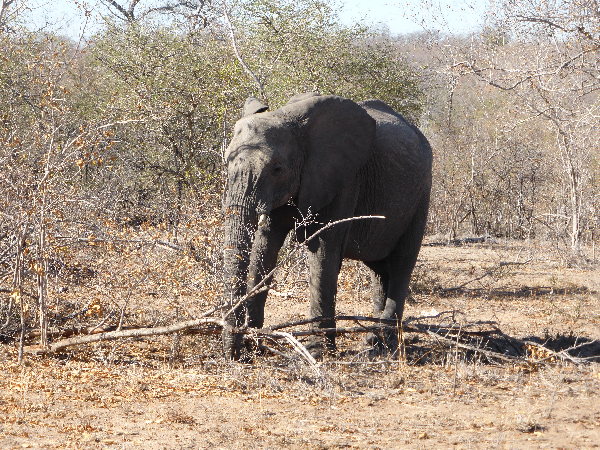
We turn back to our campsite, feeling a bit frustrated. As we rounded a bend, a tree blocked the road; an elephant had pulled it up. The driver started reversing, and we realised a herd of elephants was surrounding us. As we went backwards through the bush, an enormous elephant charged forward right next to my husband, David. The elephant trumpeted at us as we shot past. Our hearts were beating like mad, and David’s ears were ringing. We calmed down once we were back: it was an evening we wouldn’t forget.
That evening, we sat around the fire outside for dinner and watched the hyenas walk past. This was our second day, and we had already seen the Big 5.
Day three
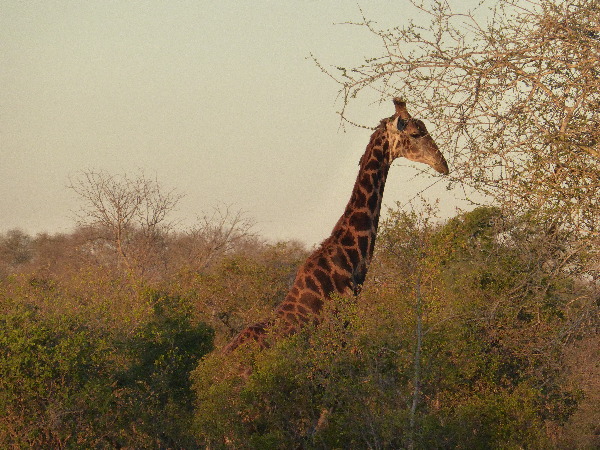
The morning ride provided more opportunities for great photos. We spotted some giraffes and were told to walk to get close to them. We had to walk in a line, one behind the other. David was so busy watching the animals that he didn’t notice when the person in front had stopped and crashed into the man in front of him. Creeping up on these tall animals was amazing, but a minute or two later, they were off—probably because we were clumsy, noisy amateurs.
In the afternoon, we went on another walk and followed a leopard’s footprints. The monkeys were making a lot of noise, which signifies danger is close. Some giraffes crossed our path, so we followed them instead and got really close to them. Our walking in a straight line skill had improved.
The highlight of our evening game drive was watching a 3-week-old rhino. Later, we watched some elephants stripping down trees until one made a fake charge at us. We were told the animals were more protective at the moment because they had young. I was pleased when the jeep sped off; I didn’t want another close encounter with an elephant.
Some of the other people from our camp witnessed a fight over food between a pack of hyenas and a leopard. Some of the guests found It gruesome and disturbing.
Day four
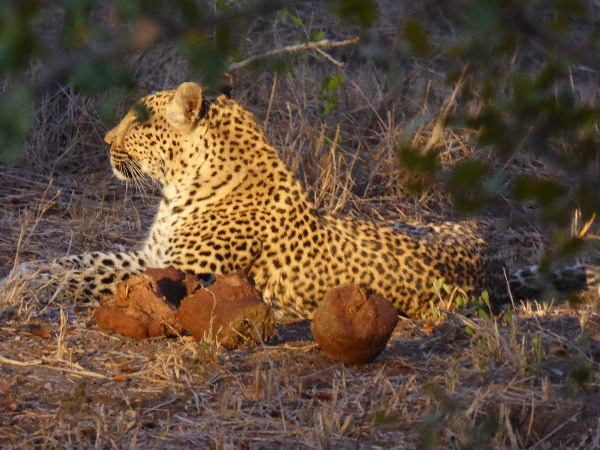
This was our final game drive. At one point, we went on a high-speed drive because a lion had been reported near a border, and we wanted to see it before it crossed, as our vehicle wasn’t allowed into that area. We got there just in time. We also spent a long time watching a leopard munching on a bone in the undergrowth. It was so close we could hear it chewing.
Back at the campsite, the owner was looking for us. The night before, we had told him our plans to go to Swaziland, and he was worried we would be putting ourselves in danger when driving there. We explained our plans, and he confirmed we weren’t in danger. I was impressed that the owner was concerned about our future welfare.
Summary
Safaris are exciting. Although I got scared several times, you are not in danger if you have a good guide and do what they tell you. They can be expensive. Later on during this holiday, we went on a day safari in Botswana, and watching a baby elephant trying to cross a deep river was amazing. He went under the water for a minute, and I was relieved when he emerged between two adult elephants. As this was a day safari, it was more affordable.
Searching for animals and finding them in their natural habitat is very satisfying at a primal level. It is interesting to see animals that are separated in zoos side by side at waterholes in the wild.
If you get a chance to go on a safari, even for the day, take it. We are going on another safari this summer in Kenya and staying in a tent. It does have its own toilet and a proper bed. I don’t know if the nighttime guard looks like Dwayne Johnson or Arnold Schwarzenegger, but I feel braver now.
Come on, give it a try. You will never forget your first safari. We can then exchange stories around the campfire.
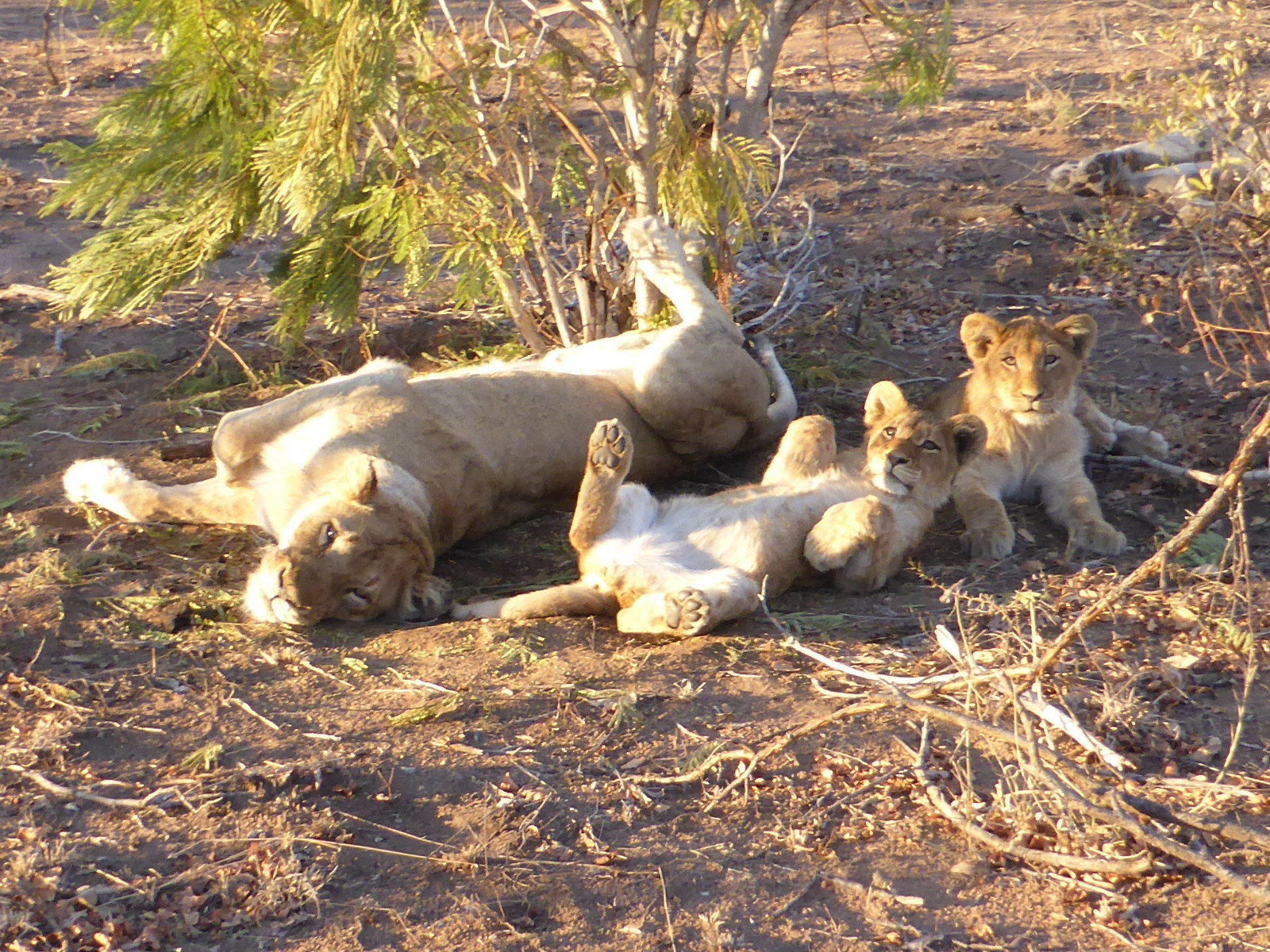
Leave a Reply